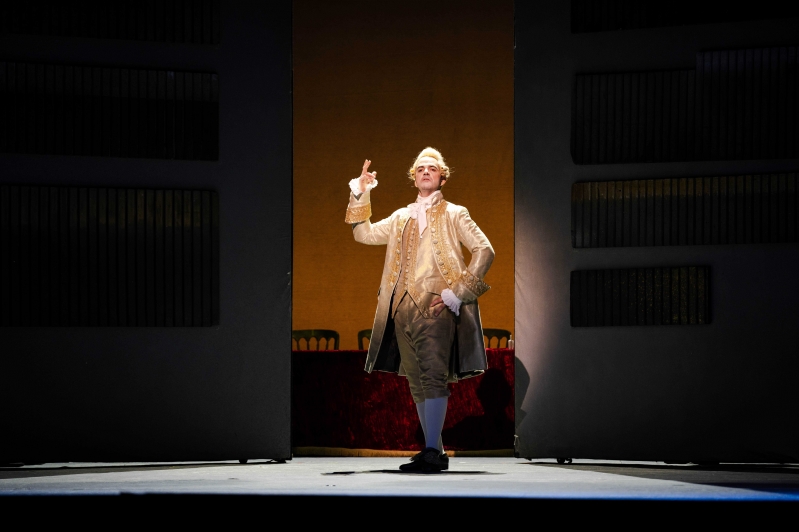When The Marriage of Figaro premiered in 1786, it caused quite the stir. The original play, by Pierre Beaumarchais, had been banned in Vienna for mocking the aristocracy. With revolution brewing across Europe, the rulers were right to be nervous.
Mozart’s librettist, Lorenzo Da Ponte softened the most provocative bits to get past the censors And what remained? A story that's still strikingly relevant to this day, filled to the brim with cheating, secrets, revenge plots and dramatic weddings. Might sound a bit like a soap opera, but we assure you, it’s Mozart!
So, how exactly can this 18th century opera tell us about our lives in the 21st?
Lesson 1: Position and Power
At the centre of Figaro is Count Almaviva, a man who has clearly disregarded all his mandatory HR training. On the very day of Figaro’s wedding to Susanna, the Count tries to seduce the bride.
Susanna and Figaro are not having that. Together, they devise a plan to expose him. And it works.
It’s a timeless reminder that status doesn’t equal virtue. Even now, we’re dealing with toxic bosses, class divides and regular abuses of power. Figaro shows us that quick thinking and integrity are worth more than any title.

Lesson 2: Everyone deserves a voice
For an 18th century opera, The Marriage of Figaro is radical. It doesn’t centre on the aristocracy. It puts the servants in the spotlight. The funniest lines, the most stirring arias and the cleverest schemes all belong to the staff.
Susanna is a brilliant strategist. The Countess, though heartbroken, remains composed and quietly powerful. Together, they stand up to the Count. It’s a firm reminder that stories worth telling don’t just belong to kings and queens. They belong to all of us.
From Derry Girls to Pride, audiences are embracing stories that celebrate working class voices and quiet acts of resistance. And The Marriage of Figaro sang that tune long ago.
Lesson 3: Love wins (even if it’s messy)
Let’s be honest. The plot is wild. Disguises, mistaken identities, people hiding in wardrobes. But through it all, Susanna and Figaro stay together. They bicker. They miscommunicate. But they trust, forgive and fight for each other.
Their love isn’t perfect. But it’s real. Like Normal People or Heartstopper,The Marriage of Figaro reminds us that true connection is absolutely worth the chaos.

Lesson 4: Forgiveness is a strength
In the final act, the Count is exposed and humiliated. He begs for forgiveness. And the Countess, in one of opera’s most poignant moments, grants it.
It’s not about forgetting betrayal. It’s about emotional maturity.
Like Beyoncé’s Lemonade or Love Actually, the opera reminds us that compassion isn’t weakness. It’s power.
Lesson 5: You should probably go and see it
The Marriage of Figaro may be over 230 years old. But it still sings from the same hymn sheet as we do now. If you haven’t seen it live, there’s no better time to experience it.
Join us for the final performance of the timeless The Marriage of Figaro in Plymouth on 6 June.



